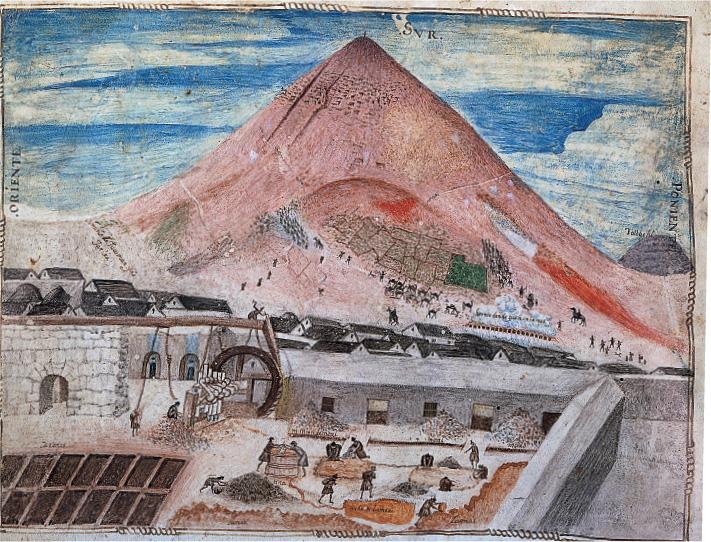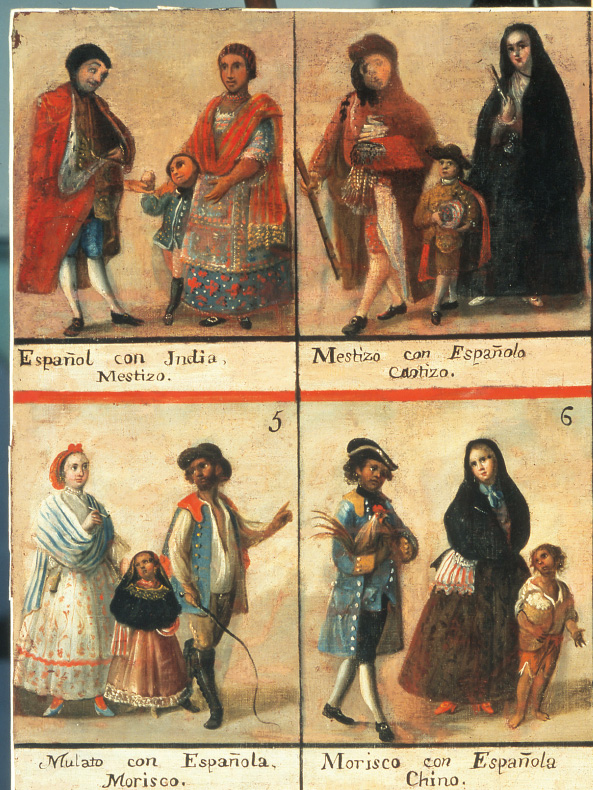The Impact of European Settlement on the Lives of Indigenous Peoples
Before Columbus’s arrival, the Americas were inhabited by thousands of groups of indigenous peoples with different languages and cultures. These groups ranged from hunter-gatherer tribes organized into tribal confederations to large-scale agriculture-based empires connecting bustling cities and towns.
encomienda system A system whereby the Spanish crown granted the conquerors the right to forcibly employ groups of Indians; it was a disguised form of slavery.
The lives of these indigenous peoples were radically transformed by the arrival of Europeans. In the sixteenth century perhaps two hundred thousand Spaniards immigrated to the New World. To work the cattle ranches, sugar plantations, and silver mines these settlers established, the conquistadors first turned to the indigenous peoples.
The Spanish quickly established the encomienda system, in which the Crown granted the conquerors the right to employ groups of Native Americans as laborers or to demand tribute from them in exchange for providing food and shelter. In practice, the encomiendas (ehn-koh-mee-EHN-duhz) were a legalized form of slavery.
The new conditions and hardships imposed by conquest and colonization resulted in enormous native population losses. The major cause of death was disease. Having little or no resistance to diseases brought from the Old World, the inhabitants of the New World fell victim to smallpox, typhus, influenza, and other illnesses. Another factor behind the decline in population was overwork. Unaccustomed to forced labor, native workers died in staggering numbers. Moreover, forced labor diverted local people from tending to their own crops, leading to malnutrition, reduced fertility rates, and starvation. Malnutrition and hunger in turn lowered resistance to disease. Finally, many indigenous peoples also died through outright violence in warfare.2

The Franciscan Bartolomé de Las Casas (1474–1566) documented the brutal treatment of indigenous peoples at the hands of the Spanish, claiming that “of three millions of people which Hispaniola itself did contain, there are left remaining alive scarce three hundred persons.”3 Las Casas and other missionaries asserted that the Indians had human rights, and through their persistent pressure the Spanish emperor Charles V abolished the worst abuses of the encomienda system in 1531.

The pattern of devastating disease and population loss established in the Spanish colonies was repeated everywhere Europeans settled. The best estimate is that the native population declined from roughly 50 million in 1492 to around 9 million by 1700. It is important to note, however, that native populations and cultures did survive the conquest period, sometimes by blending with European incomers and sometimes by maintaining cultural autonomy.
For colonial administrators the main problem posed by the astronomically high death rate was the loss of a subjugated labor force to work the mines and sugar plantations. The search for fresh sources of labor gave birth to the new tragedy of the Atlantic slave trade (see page 425).